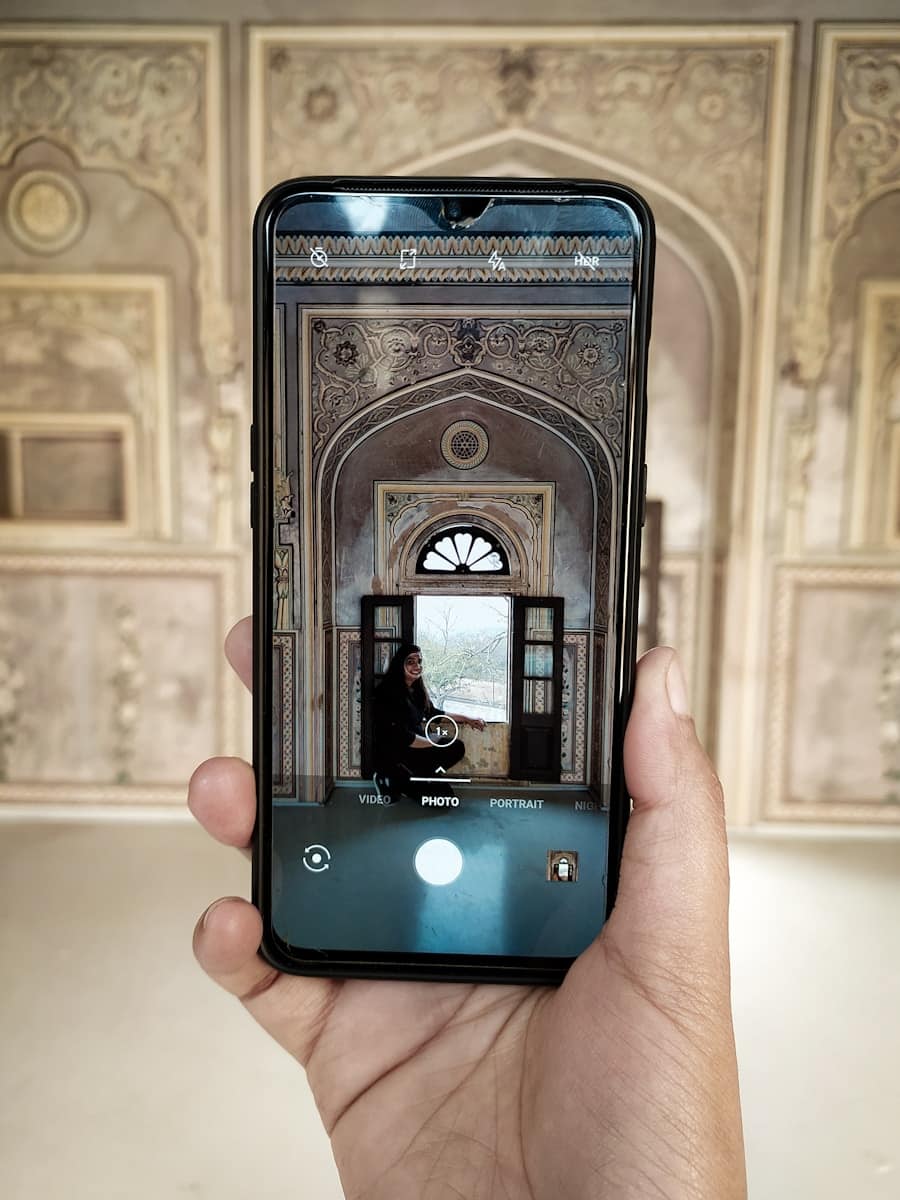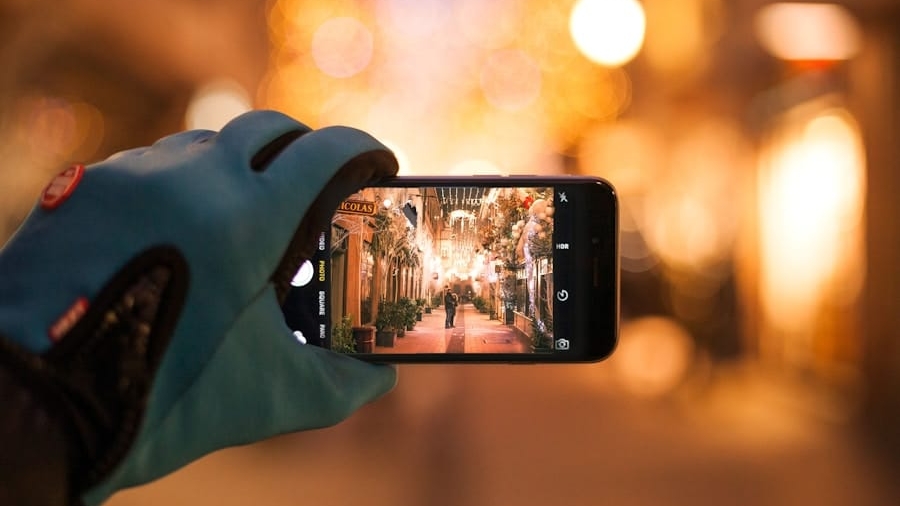Augmented Reality (AR) has emerged as a transformative technology that overlays digital information onto the physical world, enhancing the way we perceive and interact with our surroundings. In the context of travel, AR offers a unique opportunity to enrich real-time experiences, allowing travelers to engage with their environment in ways that were previously unimaginable. By integrating digital elements such as graphics, sounds, and other sensory stimuli into the real world, AR can provide travelers with contextual information, historical insights, and interactive experiences that deepen their understanding and enjoyment of a destination.
The advent of smartphones and wearable devices has significantly accelerated the adoption of AR in various sectors, including tourism. Travelers can now access AR applications that guide them through cities, museums, and natural landscapes, providing real-time information about landmarks, cultural heritage, and local attractions. This technology not only enhances the travel experience but also empowers users to make informed decisions on the go.
As AR continues to evolve, its potential to reshape the travel industry becomes increasingly apparent, offering innovative solutions that cater to the needs of modern travelers.
Key Takeaways
- AR enhances real-time travel experiences by overlaying digital information onto the physical world, providing users with interactive and immersive content.
- Current applications of AR in the travel industry include virtual tours of destinations, interactive maps, and language translation tools, offering travelers a more engaging and informative experience.
- Advantages of using AR for real-time travel experiences include improved navigation, enhanced sightseeing, and personalized recommendations, leading to a more convenient and enjoyable trip for travelers.
- Challenges and limitations of AR in the travel industry include the need for reliable network connectivity, potential distraction for users, and the high cost of developing and implementing AR technology.
- Future trends and innovations in AR for travel include the integration of AI for more personalized experiences, the use of AR glasses for hands-free navigation, and the development of AR-based travel planning and booking platforms.
Current Applications of AR in the Travel Industry
Enhancing City Exploration
AR is being used in city exploration apps, allowing users to point their smartphones at a landmark or location and receive instant information about its history, significance, and nearby attractions. Apps like Google Lens enable travelers to scan buildings or monuments and instantly access a wealth of information, including user-generated reviews and historical context.
Revolutionizing Museum Experiences
Museums and cultural institutions have also adopted AR technology to enhance visitor engagement. Many museums now offer AR-guided tours that provide interactive experiences through smartphones or AR glasses. For example, the British Museum in London has implemented an AR app that allows visitors to see ancient artifacts in their original contexts or visualize how they were used in daily life.
Transforming the Hospitality Industry
Hotels are leveraging AR for virtual room tours, allowing potential guests to explore accommodations before booking, thus enhancing the decision-making process. This innovative approach is changing the way travelers plan and experience their trips.
Advantages of Using AR for Real-Time Travel Experiences

The integration of AR into travel experiences presents numerous advantages that cater to both travelers and service providers. One significant benefit is the enhancement of situational awareness. Travelers can access real-time information about their surroundings, including navigation assistance, local events, and safety alerts.
This immediacy allows for more spontaneous decision-making, enabling travelers to discover hidden gems or participate in local activities that they might have otherwise overlooked. For instance, an AR app could alert users to a nearby street festival or pop-up market as they stroll through a city, encouraging them to engage with the local culture. Moreover, AR fosters a more personalized travel experience by tailoring content to individual preferences.
By utilizing data analytics and user profiles, AR applications can recommend activities or attractions based on a traveler’s interests and past behaviors. This level of customization not only enhances user satisfaction but also increases engagement with local businesses and attractions. For example, a traveler interested in art might receive recommendations for nearby galleries or street art tours, while a food enthusiast could be directed to popular local eateries or food markets.
This personalized approach not only enriches the travel experience but also supports local economies by driving foot traffic to lesser-known establishments.
Challenges and Limitations of AR in the Travel Industry
Despite its promising potential, the implementation of AR in the travel industry is not without challenges. One significant hurdle is the technological barrier that exists for both consumers and businesses. While smartphones are ubiquitous, not all travelers possess devices capable of supporting advanced AR applications.
Additionally, there is a learning curve associated with using new technologies; some users may find it daunting to navigate unfamiliar apps or devices while traveling. This can lead to frustration and limit the widespread adoption of AR solutions among diverse demographics. Another challenge lies in the quality and accuracy of the content provided through AR applications.
The effectiveness of AR experiences hinges on the availability of reliable data and well-designed interfaces. Inaccurate or outdated information can lead to confusion and diminish user trust in the technology. Furthermore, creating high-quality AR content requires significant investment in resources and expertise, which may be prohibitive for smaller businesses or startups within the travel sector.
As a result, there is a risk that only larger companies with substantial budgets will dominate the AR landscape, potentially stifling innovation and diversity in offerings.
Future Trends and Innovations in AR for Travel
As technology continues to advance, several trends are emerging that will shape the future of AR in the travel industry. One notable trend is the increasing integration of artificial intelligence (AI) with AR applications. AI can enhance AR experiences by providing more accurate contextual information and personalized recommendations based on user behavior and preferences.
For instance, AI algorithms could analyze a traveler’s past activities and suggest tailored itineraries that incorporate both popular attractions and off-the-beaten-path experiences. Another promising innovation is the development of location-based AR experiences that leverage geolocation technology. By utilizing GPS data, AR applications can deliver real-time content based on a traveler’s precise location.
This could include interactive historical reenactments at significant sites or guided tours that adapt dynamically as users move through different areas. Such immersive experiences would not only captivate travelers but also create a sense of connection to the destination’s history and culture.
Impact of AR on Customer Engagement and Satisfaction in Travel

The introduction of AR into travel experiences has profound implications for customer engagement and satisfaction. By providing interactive and immersive content, AR fosters a deeper connection between travelers and their destinations. Engaged customers are more likely to share their experiences on social media platforms, generating organic marketing for businesses that utilize AR effectively.
This word-of-mouth promotion can significantly enhance a brand’s visibility and reputation within an increasingly competitive market. Moreover, AR enhances customer satisfaction by addressing common pain points associated with travel. For instance, language barriers can be mitigated through AR translation features that allow users to point their devices at signs or menus for instant translations.
This functionality not only eases communication but also empowers travelers to navigate unfamiliar environments with confidence. Additionally, by offering real-time updates on transportation options or local events, AR applications can help travelers make informed decisions that enhance their overall experience.
Integration of AR with Other Technologies for Enhanced Travel Experiences
The future of travel is likely to see an increased convergence of AR with other emerging technologies such as virtual reality (VR), Internet of Things (IoT), and blockchain. The combination of these technologies can create seamless and enriched travel experiences that cater to diverse consumer needs. For example, integrating IoT devices with AR applications could enable smart environments where travelers receive personalized notifications based on their preferences as they move through different locations.
Furthermore, VR can complement AR by providing pre-travel experiences that allow potential customers to explore destinations virtually before making booking decisions. This immersive preview can significantly influence consumer choices by showcasing unique aspects of a destination that may not be easily conveyed through traditional marketing methods. Additionally, blockchain technology could enhance trust in AR applications by ensuring data integrity and security when sharing user-generated content or reviews.
Ethical and Privacy Considerations in the Use of AR for Travel
As with any technology that collects and utilizes personal data, ethical considerations surrounding privacy are paramount in the deployment of AR in travel contexts. The collection of location data raises concerns about surveillance and user consent; travelers may be unaware of how their data is being used or shared by third-party applications. It is essential for companies to establish transparent data policies that inform users about data collection practices while providing options for opting out.
Moreover, there is a risk that over-reliance on AR could detract from authentic travel experiences. As travelers become increasingly dependent on digital overlays for navigation or information, there is a potential loss of genuine engagement with their surroundings. Striking a balance between leveraging technology for enhanced experiences while encouraging meaningful interactions with local cultures is crucial for maintaining the integrity of travel as an enriching endeavor.
In conclusion, while augmented reality presents exciting opportunities for enhancing real-time travel experiences, it is essential for stakeholders within the industry to navigate its challenges thoughtfully. By prioritizing user experience, ethical considerations, and innovative integrations with other technologies, the travel industry can harness the full potential of AR to create memorable journeys for travelers around the globe.
In a recent article on how to choose the best smartphone for gaming, the importance of having a powerful device for immersive gaming experiences is highlighted.
By selecting the right smartphone for gaming, users can ensure they are equipped to make the most of AR-enhanced travel experiences in the future.

